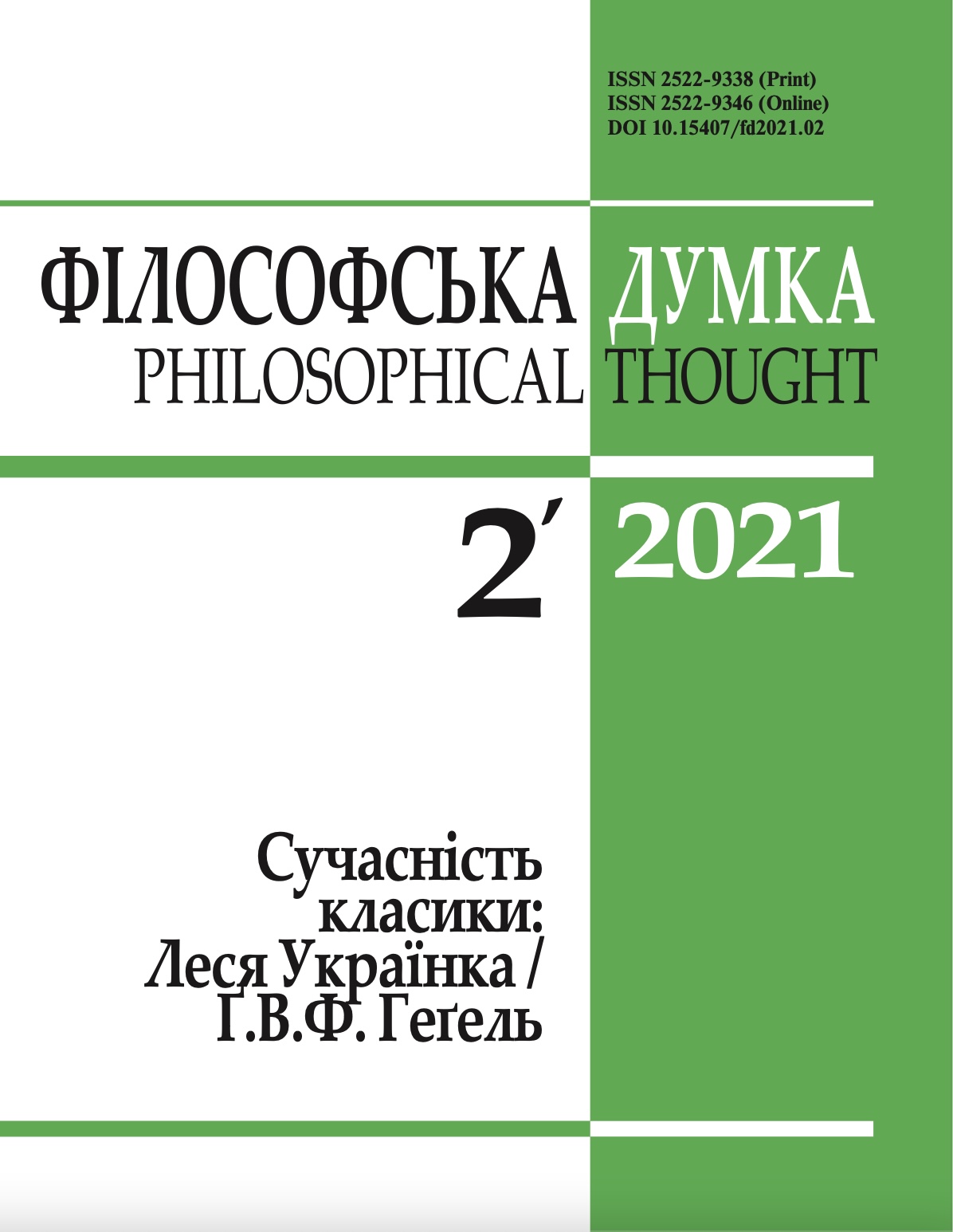METHODOLOGICAL PLURALISM THROUGH THE LENS OF THE BUDDHIST DOCTRINE OF TIME KĀLACAKRA: AN INTERVIEW WITH DR. JENSINE ANDRESEN
DOI:
https://doi.org/10.15407/fd2021.02.165Keywords:
Tibetan Buddhism, Kālacakra, Kalachakra, methodological pluralism, interdisciplinary research, integrated approach, dialogue Buddhism-scienceAbstract
Modern dialogue between Western science and Buddhism raises an enormous range of cognitive issues that require interdisciplinary and multidisciplinary research. The idea of methodological pluralism (MP) arises here as an effective solution for such projects. Having immersed itself in the study of the background of its opponent, Western science touched the fairly old and specific way of reality cognition, which in certain aspects actually can be identified as a Tibetan-Buddhist version of the MP. In an interview with the professor from the United States, who for many decades has been engaged in research on the boundaries of various science disciplines, ethics, and religious studies, we tried to clarify the specifics of this so-called version of MP, which is set out in the Buddhist doctrine of time, Kālacakra. Texts of this doctrine are included in the corpus of Buddhist canonical literature and form the basis for two classical Buddhist sciences: the science of stars (which is actually “social astronomy”); and the science of healing (which looks like a certain version of “psycho-medicine”). During the interview, we went directly to the possibility of using the Buddhist version of MP at least within the dialogue “Buddhism-Science”, to the need to understand the specifics of such an implementation, and to the mandatory combination of MP with an integrated approach. The interview was intended to raise the question that deals with transgressing the abovementioned dialogue from the “consumer” level (when we are looking for something that could be useful to the Western neuro-cognitivist) to the philosophical one, in order to formulate a criterion for recognizing a different way of thinking, and finally, to move on toward the semantic discussion, without which the integration phase of any kind of MP is impossible.
References
Andresen, J. (2001). Conclusion: religion in the flesh: forging new methodologies for the study of religion. In: J. Andresen (Ed.), Religion in Mind (pp. 257-287). New York: Cambridge Uni versity Press.
https://doi.org/10.1017/CBO9780511586330.011
Andresen, J. (2001). Introduction: towards a cognitive science of religion. In: J. Andresen (Ed.), Religion in Mind (pp. 1-44). New York: Cambridge University Press.
https://doi.org/10.1017/CBO9780511586330.001
Andresen, J. (2000). Meditation Meets Behavioral Medicine. In: J. Andresen, R. Forman (Eds.), Cognitive Models and Spiritual Maps: Interdisciplinary Explorations of Religious Experience (pp. 17-73). Thorverton: Imprint Academic.
Andresen, J, Forman, R. (2000). Introduction: Methodological Pluralism in the Study of Religion. In: J. Andresen, R. Forman (Eds.), Cognitive Models and Spiritual Maps: Interdisciplinary Explorations of Religious Experience (pp. 7-14). Thorverton: Imprint Academic.
Bohm, D. (1990). A new theory of the relationship of mind and matter. Philosophical Psychology, 3 (2), 271-286.
https://doi.org/10.1080/09515089008573004
Varela, F. (2001). Why a proper science of mind implies the transcendence of nature. In: J. Andresen (Ed.), Religion in Mind (pp. 207-236). New York: Cambridge University Press.
https://doi.org/10.1017/CBO9780511586330.009
Goertzel, B. (2006). The Hidden Pattern: A Patternist Philosophy of Mind (Illustrated edition). Florida: Brown Walker Press.
Grover, R. (2005). Kalachakra Meditation. New Delhi: New Age Books.
Kalantarova, O. (2019). Kalachakra as the teaching of Tibetan-Buddhist tradition (historiographical essay). [In Ukrainian]. Мultiversum, 1-2 (167-168), 96-124. Retrieved from: http://doi.org/10.35423/2078-8142.2019.1-2.06
https://doi.org/10.35423/2078-8142.2019.1-2.06
Kalantarova, O. (2019). Tibetan buddhism and science: dialogue based on the teaching of Kalachakra. [In Ukrainian]. Naukovi zapysky NaUKMA. Istoria i teoria kultury, 2, 88-97. Retrieved from: http://doi.org/10.18523/2617-8907.2019.2.88-97
https://doi.org/10.18523/2617-8907.2019.2.88-97
Newman, J. (1987). The Outer Wheel of Time: Vajrayāna Buddhist Cosmology in the Kālachakra Tantra (Ph.D. Diss). Madison: University of Wisconsin.
Wallace, V.A. (Tr.) (2001). The Inner Kālacakratantra: A Buddhist Tantric View of the Individual. New York: Oxford University Press.
https://doi.org/10.1093/0195122119.001.0001
Wallace, V.A. (Tr.) (2004). The Kālacakratantra: The Chapter on the Individual (together with the Vima- laprabhā). New York: American Institute of Buddhist Studies.
Wallace, V.A. (Tr.) (2010). The Kālacakratantra: The Chapter on Sādhanā (together with the Vima- laprabhā commentary). New York: The American Institute of Buddhist Studies, Columbia University's Center for Buddhist Studies, Tibet House US.
Weber, R. (1987). Meaning as being in the implicate order philosophy of David Bohm: a conversa- tion. In: B.J. Hiley, F.D. Peat (Ed.), Quantum Implications: Essays in Honour of David Bohm (pp. 436-50). London, New York: Routledge.
Downloads
-
PDF (Українська)
Downloads: 173
Published
How to Cite
Issue
Section
License
Authors who publish with this journal agree to the following terms:
- Authors retain copyright and grant the journal right of first publication.
- Authors are able to enter into separate, additional contractual arrangements for the non-exclusive distribution of the journal's published version of the work (e.g., post it to an institutional repository or publish it in a book), with an acknowledgement of its initial publication in this journal.
- Authors are permitted and encouraged to post their work online (e.g., in institutional repositories or on their website) prior to and during the submission process, as it can lead to productive exchanges, as well as earlier and greater citation of published work (See The Effect of Open Access).


